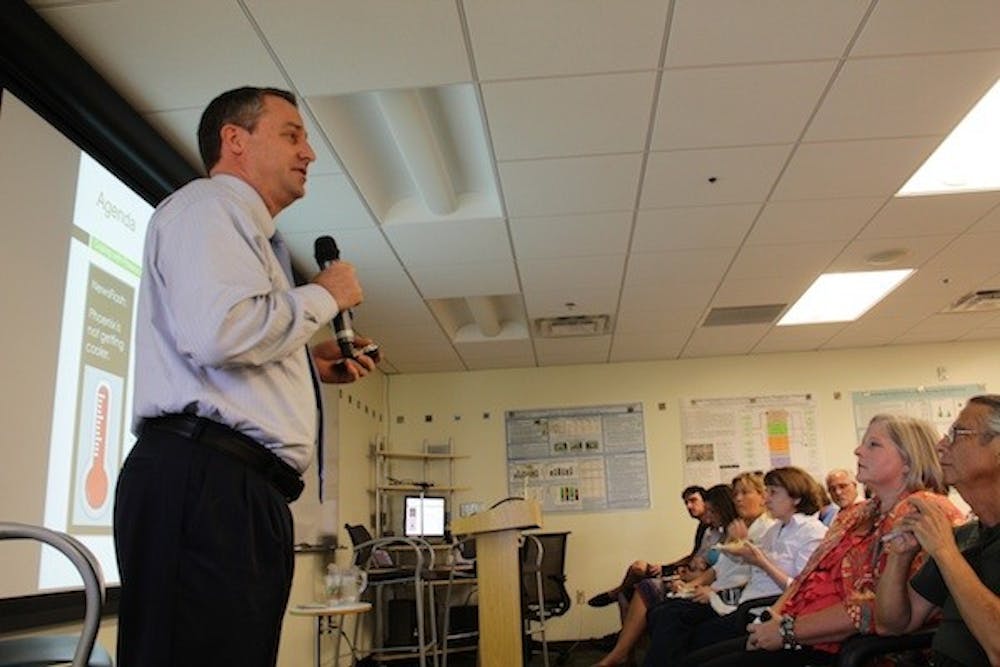Phoenix and its residents are no strangers to hot summers, a fact that drew a group of experts to the Global Institute of Sustainability Wednesday to discuss how the state's residents cope and what strategies they can use in the future.
Anthony Brazel, an emeritus professor from the School of Geographical Sciences and Urban Planning, said the monsoon season has become more dry over the years and heat waves are predicted to be coming more often.
"It's incumbent on us as we cope with the heat to think about these variations and planning ways to suppress these hot zones as the climate changes," Brazel said.
History professor Philip Vandermeer said as Phoenix developed into an urban area, residents combated the harsh summers by creating shade with awnings over windows and also worked to extend shade over sidewalks.
Vandermeer said other methods residents used included wrapping themselves in damp sheets or using fans.
"Victorian-style homes were not very well designed for the desert," Vandermeer said. "By 1905, there was an explicit campaign to build bungalows."
He said Phoenix residents also created shade by altering their environment, creating canals and irrigation systems that in turn flourished with agriculture and promoted outdoor activity among families.
"Canals provide the opportunity for a lush environment," Vandermeer said.
He said Phoenix changed fundamentally following the popular rise of air conditioning by the late 1960s.
In light of past cooling practices, ASU Energize Phoenix Project Manager Mick Dalrymple said using materials that reflect the sun's heat rather than absorb it, such as using metal on a roof rather than shingles, will help keep homes cooler.
The Energize Phoenix Project is a federally funded endeavor to increase energy efficiency in Phoenix.
Valley Permaculture Alliance is a nonprofit organization focused on sustainable urban living, and its Executive Director, Doreen Pollack, said it's important to utilize plants when creating shade for a home.
Pollack said by keeping an eye out for "hot spots" around the exterior of a home, a homeowner can determine the best way to create a shaded environment.
She said she has planted fruit trees, vegetable and herbs in her own garden, serving the dual purpose of adding shade and growing something edible.
"It's the vegetation that's going to be giving back some moisture to the property," Pollack said. "Plant something in your yard that you'll eat."
ASU alumnus Luis Salazar, an architect focused on sustainable building, said Arizona's large quantities of sun can be used positively through solar collectors.
"Heat is energy," Salazar said. "We can take advantage of that."
Reach the reporter at dgrobmei@asu.edu
Follow us on Twitter or like us on Facebook. Click here to subscribe to the daily State Press email newsletter.





